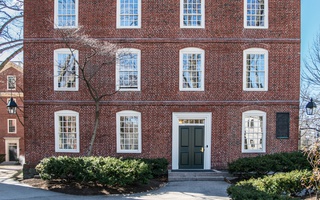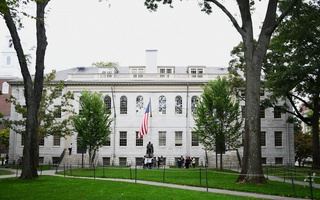{shortcode-f7dff7852b7abe61e328cd92cd62a97b13f3057b}
A national sexual misconduct climate survey administered to universities across the country earlier this year revealed that most schools did not see a significant change in the prevalence of sexual assault compared with incident rates four years ago, according to the results released earlier this month.
The American Association of Universities survey found that among similarly sized peer institutions, Harvard’s rate of sexual misconduct tended toward average.
Harvard’s prevalence rate of “nonconsensual sexual contact” for undergraduate women was within a percentage point of both Stanford’s and Brown’s. Harvard and Stanford both saw rates of roughly 33 percent, while Brown’s rate is 34 percent. Yale’s rate is higher at 39 percent, while MIT’s is lower at 27 percent.
Harvard’s prevalence of harassment also falls within a similar range as peer institutions. Its rate — 17 percent — was slightly lower than that of Stanford, Yale, and Brown; MIT reported less harassment than Harvard, at 16 percent. All of the school’s harassment rates were within eight percentage points of each other.
The schools varied more in their students’ reported knowledge of their campus’s definition of sexual misconduct, but overall, reported knowledge was higher than it had been during the survey’s first iteration in 2015. Brown students reported the least confidence in their knowledge at 29 percent, though still saw an increase from 18.4 percent in 2015. Yale students had the highest reported rate, at 40 percent. At Harvard, 34 percent of students said they were very or extremely knowledgeable about how Harvard defines sexual assault and other misconduct — up from the 14.5 percent reported in 2015.
The majority of respondents at each school who experienced sexual misconduct noted that they did not report the misconduct because they thought the harassment was not serious enough or that they could handle the situation themselves.
While there was alignment between schools in many respects, response rates varied widely across institutions. Stanford — which had the second-highest response rate among all participating institutions — saw a response rate of 62 percent. Stanford students were offered a $20 incentive to complete the survey. In comparison, Harvard’s response rate was 36 percent; Yale reported a 45 percent response rate, MIT reported 40 percent, and Brown reported 31.5 percent.
Harvard’s responses were roughly average across the entire survey group AAU, however.
“The results provide cause for both hope and continued concern,” AAU President Mary Sue Coleman wrote in a press release. “They reveal that, while students know more about university-sponsored resources for victims of sexual assault and misconduct, they still aren’t using these resources often enough.”
Following the release of the survey’s results, administrators across the various universities have said they will make changes to reduce incidents of sexual misconduct on campus.
Title IX Officer Nicole M. Merhill wrote in an emailed statement that Harvard will continue to lead conversations with other schools in the National Academies of Sciences, Engineering, and Medicine’s Action Collaborative — an ongoing initiative which Harvard helped to found, and will continue to work with in order to best apply the AAU survey’s findings.
“We are also working closely with our Ivy Plus peers on establishing, and sharing, best practice in prevention,” Merhill wrote.
—Staff writer Simone C. Chu can be reached at simone.chu@thecrimson.com. Follow her on Twitter @simonechu_.
—Staff writer Iris M. Lewis can be reached at iris.lewis@thecrimson.com.
Read more in News
Harvard IOP Hosts Lecture on Financial Regulation Methods















